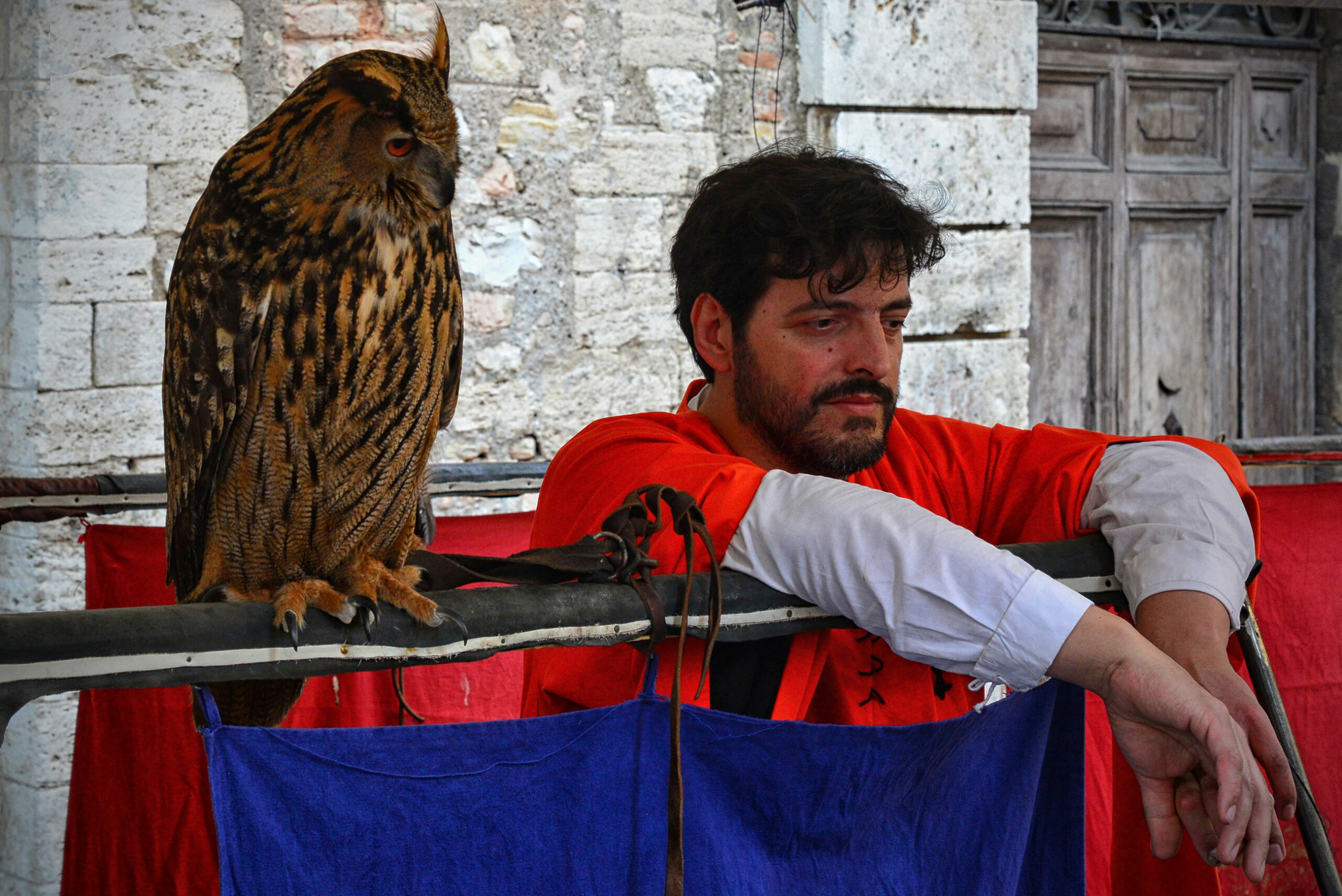Narni is an exquisite hill town located in Umbria: it sits on a rocky outcrop overlooking the Nera River, and its narrow streets, ancient churches, and stunning views make it a great place to experience. If you like historical reenactments and good, old-fashioned traditional events, then you should visit Narni between the end of April and the beginning of May, when the famous Corsa all’Anello, or Race to the Ring, takes place. Be ready to step back in time and have great fun!
The Corsa all’Anello di Narni is definitely one of the most engaging and popular historical reenactments in Italy, drawing thousands of visitors each year from all over the country.
Its origins are shrouded in mystery, but it is believed to have started in the 14th century: according to one popular legend, the contest was invented by a group of knights who were passing through Narni on their way to a tournament. They were challenged by the locals to prove their skill and courage, and so the Corsa all’Anello was born. In time, the event became part of the celebrations for Narni’s patron saint, Giovenale, who is honored on the 3rd of May, and it is still like that today.
The key event begins on May 1st, with a herald passing through the city’s streets announcing the start of the festive, sporting, and religious celebrations. On the night of May 2, a solemn procession known as the Offerta dei Ceri takes place through the streets of Narni, ending at the cathedral: this is one of the most ancient traditions connected to the Corsa, with documents attesting to its existence as early as 1227.
But the highlight of it all is the Corsa all’Anello itself, which takes place on the second Sunday in May. It consists of two different races: the historic Corsa all’Anello and the modern Corsa all’Anello. The historic Corsa all’Anello, also known as the Corsa del Palio and open to all, is the oldest and most traditional race. The modern Corsa all’Anello, on the other hand, is a more recent addition: it comes, so to speak, in two rounds, La Sfida (the challenge), in May as per tradition, and la Rivincita (the rematch), introduced in 2017, which happens in September. Both events are surrounded by a plethora of cultural initiatives, and plenty of things to do are organized around town.
The modern horse race is a thrilling and competitive spectacle that attracts the best horsemen and jousters around: it takes place at the Campo de li Giochi, where participants compete in a thrilling joust, aiming to spear a small metal ring hanging from a wire. The ring is only a few centimeters in diameter, making the competition both challenging and impressive to watch. Celebrations are not limited to the joust, though, because the city comes alive with parades, pageants, and various other activities throughout the festivities. These events showcase the rich cultural heritage of Narni and are an excellent opportunity to experience the local traditions firsthand.
But the Corsa all’Anello is more than just a jousting tournament, it is a celebration of Narni’s rich cultural heritage and history: it is steeped in ancient traditions and rituals rooted deeply into the community’s cultural conscience, and it offers the opportunity to truly get in touch with Narni’s past. Participants in the modern Corsa are dressed in traditional medieval attire, complete with armor, swords, and shields, and even the horses are adorned with intricate and colorful garments that add to the splendor of the event. All of this mirrors ancient medieval fashion and customs and is reproduced with much attention to detail and historical accuracy. And let’s not forget that the Corsa is also an opportunity for visitors to explore the charming town of Narni: visitors can explore the narrow cobbled streets of the historic town center, which is home to several beautiful medieval buildings and churches, pretty cafés and traditional stores.
With such a long and interesting history, it isn’t surprising that the Corsa all’Anello tradition is filled with curiosities and quirky anecdotes! For instance, in the past, the winner of the contest was given the honor of choosing a bride among the local women, and the Corsa was even banned – albeit briefly – by the Church in the 17th century due to its association with gambling and excess; the ban was lifted a few years later.
And while you are in Umbria, of course, you must try and enjoy the local cuisine, which is absolutely delicious: from strangozzi with black truffle to porchetta, from torta al testo – a type of flatbread cooked on a hot griddle called testo, and filled with various ingredients, such as cured meats, cheese, and vegetables – to wild boar dishes and crescionda — a traditional dessert made with eggs, sugar, and almonds and often served with chocolate sauce — there is something for all tastes!































